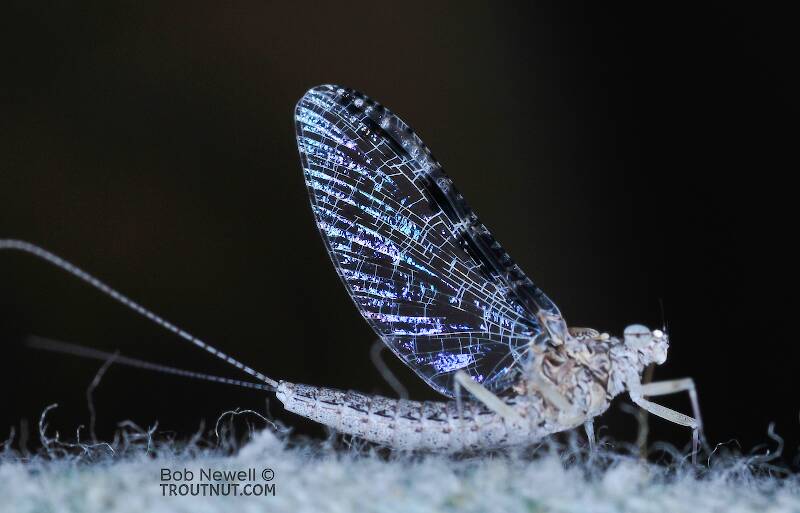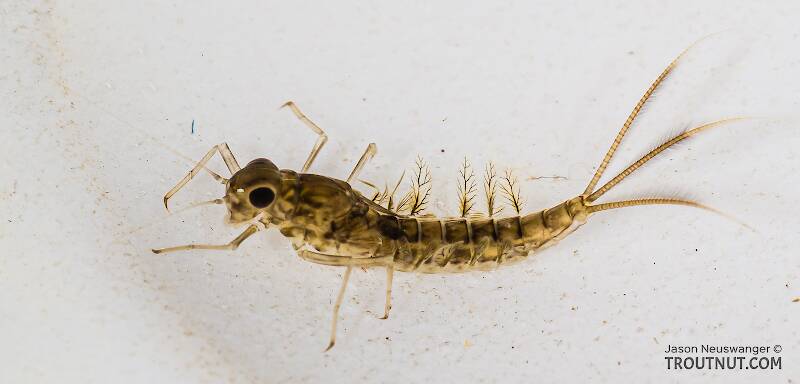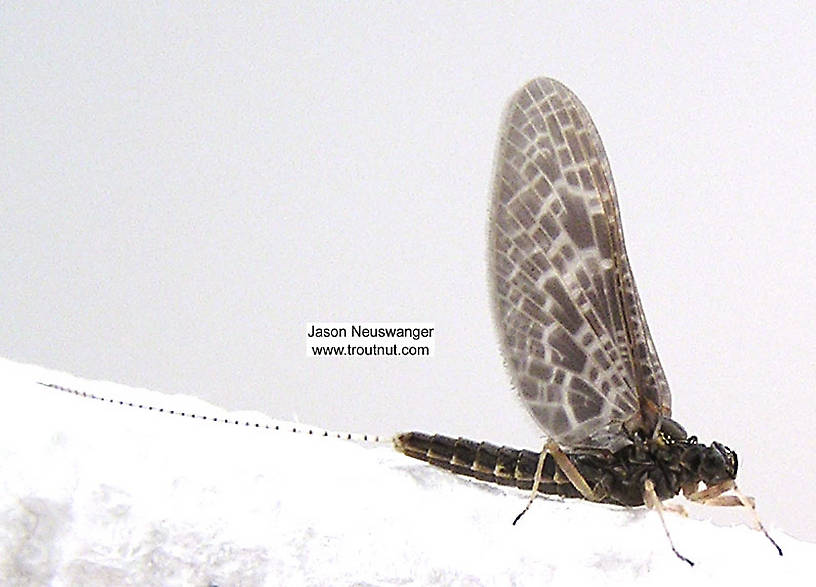
Hex Mayflies
Hexagenia limbata
The famous nocturnal Hex hatch of the Midwest (and a few other lucky locations) stirs to the surface mythically large brown trout that only touch streamers for the rest of the year.
Featured on the forum

This specimen keys to the Epeorus albertae group of species. Of the five species in that group, the two known in Washington state are Epeorus albertae and Epeorus dulciana. Of the two, albertae has been collected in vastly more locations in Washington than dulciana, suggesting it is far more common. On that basis alone I'm tentatively putting this nymph in albertae, with the large caveat that there's no real information to rule out dulciana.

Troutnut is a project started in 2003 by salmonid ecologist Jason "Troutnut" Neuswanger to help anglers and
fly tyers unabashedly embrace the entomological side of the sport. Learn more about Troutnut or
support the project for an enhanced experience here.
Speckled Duns
This common name refers to only one genus. Click its scientific name to learn more.
Mayfly Genus Callibaetis
These are pretty much always called Speckled Duns.
The speckle winged Callibaetis genus contains on average the largest species in the Baetidae family with hatches ranging in size from 20 to 12 (6mm to 12mm). However, most can be matched with 14 and 16 imitations. They reside only in very slow weedy sections of rivers or lakes and ponds.
The most important are the sub-species Callibaetis ferrugineus ferrugineus in the East and Midwest and Callibaetis ferrugineus hageni in the West. It is in the West however, where this genus achieves its densest populations and most significant hatches. Other important western species also happen to be at both sides of the size scale. The outsized Callibaetis californicus can produce excellent hatches. The diminutive Callibaetis pictus can also be locally prolific, especially at higher elevations.
The duns are easily recognized by their speckled bodies and distinctive wings usually featuring a dark background overlaid with white veins. Female spinners are also easy to recognize with their clear wing's leading edges marked with dark blotches -- see the pictures.
The most important are the sub-species Callibaetis ferrugineus ferrugineus in the East and Midwest and Callibaetis ferrugineus hageni in the West. It is in the West however, where this genus achieves its densest populations and most significant hatches. Other important western species also happen to be at both sides of the size scale. The outsized Callibaetis californicus can produce excellent hatches. The diminutive Callibaetis pictus can also be locally prolific, especially at higher elevations.
The duns are easily recognized by their speckled bodies and distinctive wings usually featuring a dark background overlaid with white veins. Female spinners are also easy to recognize with their clear wing's leading edges marked with dark blotches -- see the pictures.

These adults are probably C. ferrugineus.

This nymph was one of a horde I could see cruising the still shallows of a cold tailwater, mixed in with an intense emergence of duns. It's one of four specimens I photographed together from the same hatch, also including a male dun, a female dun, and a male spinner.
This nymph keys to either Callibaetis ferrugineous or Callibaetis pallidus. The lack of a darkened preapical band on the femora would suggest pallidus, but I can't definitively make out the "single seta" on the outer, ventral apex of any of the tarsi, the length of which is supposedly a more reliable characteristic to tell the species spart. I can maybe make something out on one of the legs at the highest magnification, and its dimensions would suggest ferrugineous.
This nymph keys to either Callibaetis ferrugineous or Callibaetis pallidus. The lack of a darkened preapical band on the femora would suggest pallidus, but I can't definitively make out the "single seta" on the outer, ventral apex of any of the tarsi, the length of which is supposedly a more reliable characteristic to tell the species spart. I can maybe make something out on one of the legs at the highest magnification, and its dimensions would suggest ferrugineous.
See 12 more specimens...


